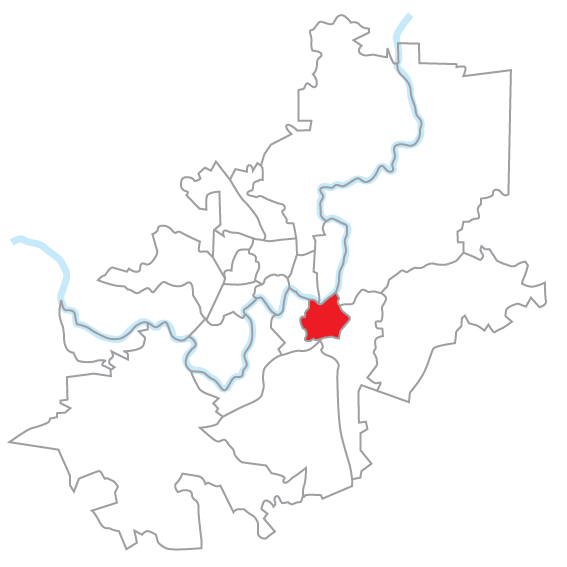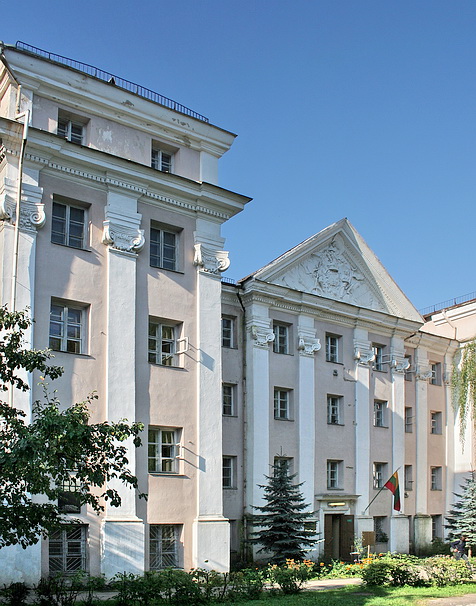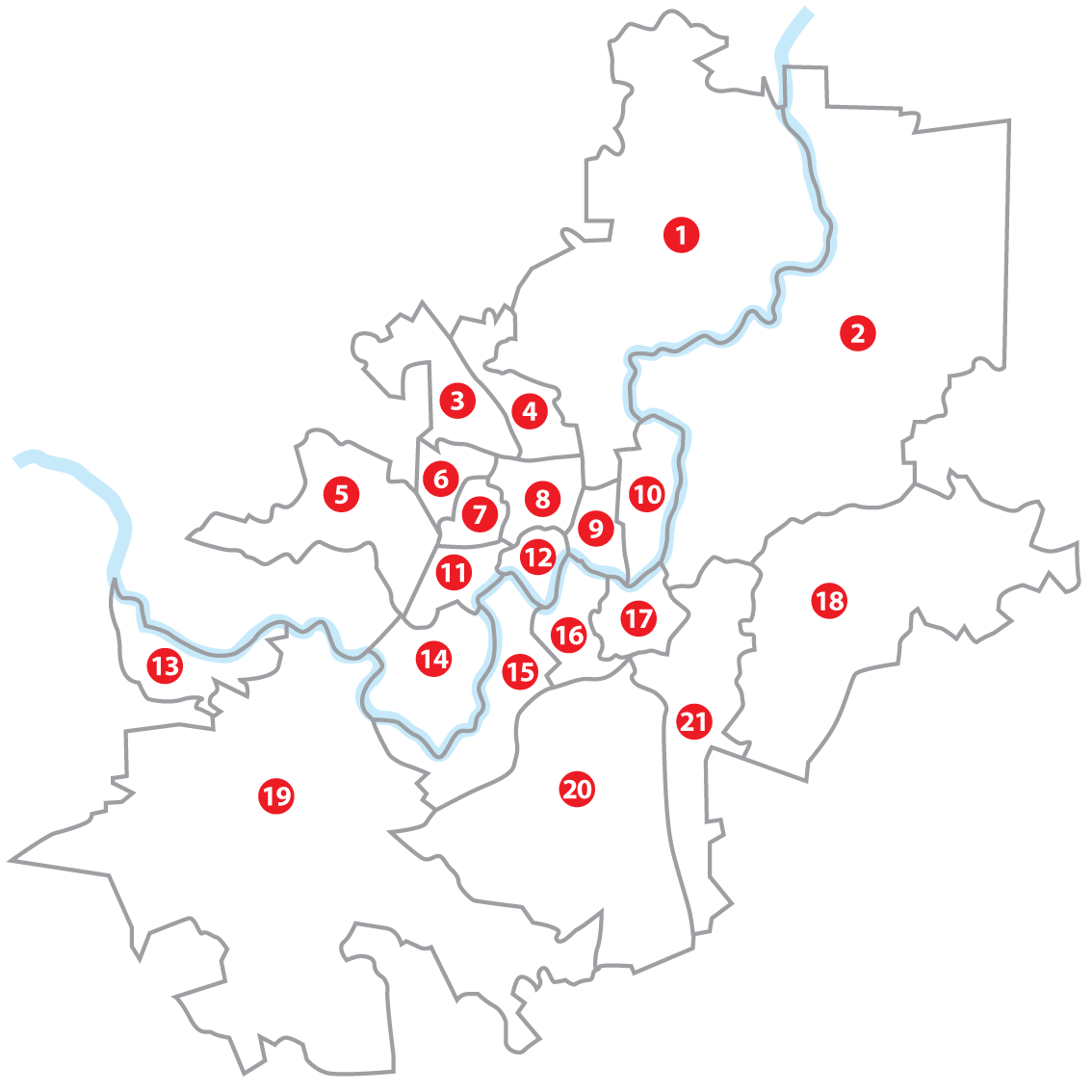|
Old Town Of Vilnius
The Old Town of Vilnius (), one of the largest surviving medieval old towns in Northern Europe, as inscribed within UNESCO World Heritage Sites, has an area of 3.59 square kilometres (887 acres). It encompasses 74 quarters, with 70 streets and lanes numbering 1487 buildings with a total floor area of 1,497,000 square meters. The administrative division of the Old Town (senamiesčio seniūnija) is a larger territory and comprises more than 4.5 square kilometres. It was founded by the Lithuanian Grand Duke and King of Poland Jogaila in 1387 on the Magdeburg rights the oldest part of the Lithuanian capital of Vilnius, it had been developed over the course of many centuries, and has been shaped by the city's history and a constantly changing cultural influence. It is a place where some of Europe's greatest architectural styles gothic, renaissance, baroque and neoclassicalstand side by side and complement each other. There are many Catholic, Lutheran and Orthodox churches, residen ... [...More Info...] [...Related Items...] OR: [Wikipedia] [Google] [Baidu] |
Vilnius
Vilnius ( , ) is the capital of and List of cities in Lithuania#Cities, largest city in Lithuania and the List of cities in the Baltic states by population, most-populous city in the Baltic states. The city's estimated January 2025 population was 607,667, and the Vilnius urban area (which extends beyond the city limits) has an estimated population of 747,864. Vilnius is notable for the architecture of its Vilnius Old Town, Old Town, considered one of Europe's largest and best-preserved old towns. The city was declared a World Heritage Site, UNESCO World Heritage Site in 1994. The architectural style known as Vilnian Baroque is named after the city, which is farthest to the east among Baroque architecture, Baroque cities and the largest such city north of the Alps. The city was noted for its #Demographics, multicultural population during the Polish–Lithuanian Commonwealth, with contemporary sources comparing it to Babylon. Before World War II and The Holocaust in Lithuania, th ... [...More Info...] [...Related Items...] OR: [Wikipedia] [Google] [Baidu] |
Gediminas Avenue
Gediminas Avenue () is the main street of Vilnius, where most of the governmental institutions of Lithuania are concentrated, including the government, parliament, Constitutional Court and ministries. It is also the location of cultural institutions such as the Lithuanian National Drama Theatre, Bank of Lithuania, Lithuanian Academy of Music and Theatre and Martynas Mažvydas National Library. It is also a popular shopping and dining street, with the highest average rent prices in the country. It is partially a pedestrian street in the evenings when traffic is prohibited. Named after the Grand Duke of Lithuania Gediminas, the street terminates at the Žvėrynas Bridge over the Neris River near Seimas Palace on one end and at the Cathedral Square and Vilnius Castle Complex on the other, passing Lukiškės Square where the Museum of Occupations and Freedom Fights is located in the former KGB building. It connects the Old Town with Žvėrynas. History The street, buil ... [...More Info...] [...Related Items...] OR: [Wikipedia] [Google] [Baidu] |
Slushko Palace
Slushko Palace (, ) in Vilnius, Lithuania is a Baroque palace situated on the left bank of Neris River in the Old Town elderate, former Antakalnis suburb of the city. The palace was erected in 1690–1700 by voivode of Polock Dominik Słuszko of the Clan of Ostoja, who ordered creating an artificial peninsula on Neris for the purpose of building the palace there. The peninsula was formed from the soil of the leveled down hill separating Antakalnis from the Vilnius Castles. Initially the façades of the palace were unified by a giant order of Ionic pilasters framing huge windows. It is believed that the decoration works of the palace were performed by Michelangelo Palloni and Giovanni Pietro Perti who was the architect of the palace. The Polish–Lithuanian rulers used to stay in the palace during their visits in the city after the Royal Palace was damaged. The tsar Peter I of Russia stayed and had his headquarters established here in 1705 and 1709. After Słuszko's death t ... [...More Info...] [...Related Items...] OR: [Wikipedia] [Google] [Baidu] |
Presidential Palace, Vilnius
The Presidential Palace () is the official residence and workplace of the president of Lithuania. Located in Vilnius Old Town, Lithuania. The palace dates back to the 14th century when it was first used as the residence of the Bishop of Vilnius. and during its history, it has undergone various reconstructions, supervised by prominent architects, including Laurynas Gucevičius and Vasily Stasov. Throughout its history, the palace was used as a residence for prominent European leaders, including the monarchs of Polish-Lithuanian Commonwealth, the Kings and Emperors of France and the Emperors of Russia. In 1997 the palace became the official seat of the president of Lithuania. The term "Prezidentūra" is also used as a metonym to refer to the Office of the President of Lithuania. History The palace traces its history back to the 14th century, when Jogaila, the grand duke of Lithuania, issued an edict donating land in the city to the Vilnius Diocese, for this reason the ... [...More Info...] [...Related Items...] OR: [Wikipedia] [Google] [Baidu] |
In April, 2018 (49214140831)
IN, In or in may refer to: Dans * India (country code IN) * Indiana, United States (postal code IN) * Ingolstadt, Germany (license plate code IN) * In, Russia, a town in the Jewish Autonomous Oblast Businesses and organizations * Independent Network, a UK-based political association * Indiana Northeastern Railroad (Association of American Railroads reporting mark) * Indian Navy, a part of the India military * Infantry, the branch of a military force that fights on foot * IN Groupe, the producer of French official documents * MAT Macedonian Airlines (IATA designator IN) * Nam Air (IATA designator IN) * Office of Intelligence and Counterintelligence, sometimes abbreviated IN Science and technology * .in, the internet top-level domain of India * Inch (in), a unit of length * Indium, symbol In, a chemical element * Intelligent Network, a telecommunication network standard * Intra-nasal (insufflation), a method of administrating some medications and vaccines * Integrase, a retr ... [...More Info...] [...Related Items...] OR: [Wikipedia] [Google] [Baidu] |
Vilnia
The Vilnia (also Vilnelė; , ''Vilnia'' ; ) is a river primarily running through Eastern Lithuania. Its source is near the villages of and , 6 km south of Šumskas, nearby to the A3– M7 Medininkai–Kamenny Log border crossing complexes of the Belarus–Lithuania border for approximately 12 kilometers. Geography The Vilnia is 79.6 km long and its basin covers 624 sq. km. The river's steepness is 124.6 metres from the source to the mouth. For 13 km, its flow marks the Belarus-Lithuania border, and the remaining 69 km are in Lithuania where it flows into the Neris River at Vilnius. Eventually, its waters, via the Neris draining into the Neman River, reach the Baltic Sea. Its confluence with the Neris lies within the city of Vilnius, and the river's name is regarded to have been the source of the city's name. Sources The springs along the Vilnia's length contribute to its flow. Locals refer to the river's starting source as the Holy Stream. ... [...More Info...] [...Related Items...] OR: [Wikipedia] [Google] [Baidu] |
Vilnius In 14th C
Vilnius ( , ) is the capital of and List of cities in Lithuania#Cities, largest city in Lithuania and the List of cities in the Baltic states by population, most-populous city in the Baltic states. The city's estimated January 2025 population was 607,667, and the Vilnius urban area (which extends beyond the city limits) has an estimated population of 747,864. Vilnius is notable for the architecture of its Vilnius Old Town, Old Town, considered one of Europe's largest and best-preserved old towns. The city was declared a World Heritage Site, UNESCO World Heritage Site in 1994. The architectural style known as Vilnian Baroque is named after the city, which is farthest to the east among Baroque architecture, Baroque cities and the largest such city north of the Alps. The city was noted for its #Demographics, multicultural population during the Polish–Lithuanian Commonwealth, with contemporary sources comparing it to Babylon. Before World War II and The Holocaust in Lithuania, th ... [...More Info...] [...Related Items...] OR: [Wikipedia] [Google] [Baidu] |
Neighborhoods Of Vilnius
Neighborhoods of Vilnius () are administrative districts of Vilnius City Municipality Vilnius ( , ) is the capital of and List of cities in Lithuania#Cities, largest city in Lithuania and the List of cities in the Baltic states by population, most-populous city in the Baltic states. The city's estimated January 2025 population w .... List Elderships, a statewide administrative division, function as municipal districts. The 21 elderships are based on neighbourhoods: References External links *Official site of the Vilnius City Municipality {{Vilnius elderates Neighbourhoods in Lithuania ... [...More Info...] [...Related Items...] OR: [Wikipedia] [Google] [Baidu] |
Užupis
Užupis (, , , ) is a neighborhood in Vilnius, the capital of Lithuania, largely located in Vilnius's old town, a UNESCO World Heritage Site. Užupis means "beyond the river" or "the other side of the river" in the Lithuanian language and refers to the Vilnia River; the name Vilnius was derived from the Vilnia. The district has been popular with artists for some time, and has been compared to Montmartre in Paris and to Freetown Christiania in Copenhagen, due to its bohemian and laissez-faire atmosphere. On April 1, 1997, the district declared itself an independent republic (the Republic of Užupis), with its own constitution. Geography Užupis is quite small and isolated, being only about in size; it has around 7,000 inhabitants, nearly 1,000 of which are artists. On one side it is separated from the Old Town by the Vilnia River, on the second there are steep hills, and on the third side, it borders on an industrial area built under Soviet rule. The first bridges acros ... [...More Info...] [...Related Items...] OR: [Wikipedia] [Google] [Baidu] |
Brussels
Brussels, officially the Brussels-Capital Region, (All text and all but one graphic show the English name as Brussels-Capital Region.) is a Communities, regions and language areas of Belgium#Regions, region of Belgium comprising #Municipalities, 19 municipalities, including the City of Brussels, which is the capital of Belgium. The Brussels-Capital Region is located in the central portion of the country. It is a part of both the French Community of Belgium and the Flemish Community, and is separate from the Flemish Region (Flanders), within which it forms an enclave, and the Walloon Region (Wallonia), located less than to the south. Brussels grew from a small rural settlement on the river Senne (river), Senne to become an important city-region in Europe. Since the end of the Second World War, it has been a major centre for international politics and home to numerous international organisations, politicians, Diplomacy, diplomats and civil servants. Brussels is the ''de facto' ... [...More Info...] [...Related Items...] OR: [Wikipedia] [Google] [Baidu] |
Mini-Europe
Mini-Europe is a miniature park located in the Bruparck entertainment park, at the foot of the Atomium, in Brussels, Belgium. Mini-Europe has reproductions of monuments in the European Union and other countries within the continent of Europe on display, at a scale of 1:25. Roughly 80 cities and 350 buildings are represented. Mini-Europe receives 350,000 visitors per year and has a turnover of €4 million. Mini-Europe is the brainchild of Johannes A. Lorijn, who founded similar miniature parks in Austria and Spain. The park contains live action models such as trains, mills, an erupting Mount Vesuvius, and cable cars. A guide gives the details on all the monuments. At the end of the visit, the ''Spirit of Europe'' exhibition gives an interactive overview of the EU in the form of multimedia games. The park is built on an area of . The initial investment was of 50 million Belgian francs in 1989, on its inauguration by then-Prince Philippe of Belgium. History Inception, opening a ... [...More Info...] [...Related Items...] OR: [Wikipedia] [Google] [Baidu] |







